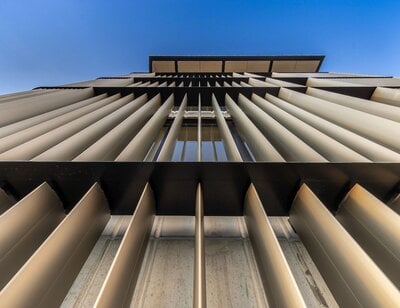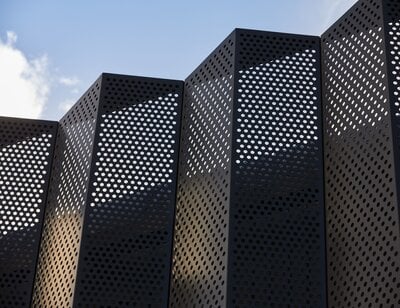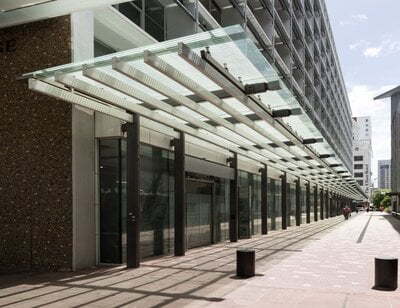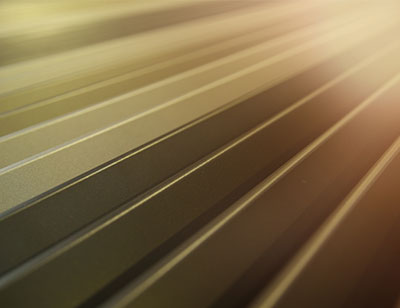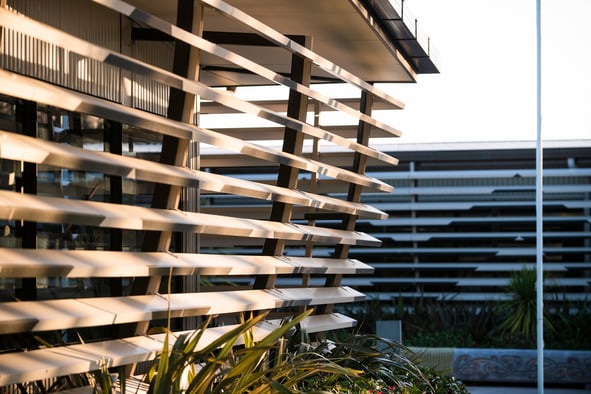
Louvres are an easy to maintain facade solution that can achieve an architect's vision without compromising on functionality. However regular cleaning and maintenance is vital if you want to see their long-term benefits.
This blog will look at some simple ways to care for your louvres that will help to see them span the decades.
Want inspiration for your next louvre project? Download our free Impressions Guide to see the creative ways you can use louvres. Find out more here.
To extend the effective life of your louvres, a simple regular maintenance programme should be implemented. Also consider how your warranty could be affected by the care of your louvres.
Firstly, it is important to consider the finish of your louvres and if they need any special treatment. If you’re unsure of what this might be, contact your supplier or manufacturer for more information.
General Care
Louvre systems should be cleaned every six months. However those within a kilometre of the ocean or around industrial or geothermal areas should be attended to at least every three months, as these environments can leave more dirt or damage on your louvres.
The following procedures can be applied regardless of the finish on your system:
Protect the louvre system at all times from contact with:
- Wet cement or plaster, paint splashes, chemicals, solvents, stains and fertilisers.
- Copper, brass, lead, mild steel, CCA treated timber, cement or concrete less than one month old.
- If contact does occur, remove the containment immediately and wash as described below.
The cleaning procedure
- Remove loose deposits with a wet sponge. Do not dry dust or the surfaces could be scratched. Remove any moss growth and ensure that all drainage systems nearby are unblocked.
- With warm fresh water, use a soft brush and mild household detergent to remove dust, salt or any other deposits. Take particular note of any areas not washed naturally by the rain.
- Rinse thoroughly with fresh water to remove any remaining detergent.
Be aware that some harsh household cleaners, thinners or solvents can be harmful to the surface of your louvres and must be avoided.
If removing more serious stains such as paint splashes, the following products can be applied safely:
- Methylated spirits
- Turpentine
- White spirits
Avoid the use of a high pressure hose or water blaster near the motor or electrical equipment of motorised louvres.
Care for powdercoated louvres
While powdercoating is a highly durable finish, it needs to be washed regularly to achieve its long-term benefits. A good quality soft bristled washing brush will do the job, although one with an in-built detergent dispenser will make it easier to rinse detergent bubbles. You can clean it this way every six months or so, and use a regular hose to simply rinse your louvres more frequently (once a month) between washes.
A powdercoated finish should avoid any contact with substances that will degrade the surface as they will limit the life of your louvres; so pay careful attention to the harshness of your cleaners – even regular sunscreen can damage the coating if it is left on the louvres.
Care for anodised louvres
Correct maintenance of anodised louvres will see them look as good in 20 years as they did the day you installed them. Washing should involve warm water that contains a suitable wetting agent or a mild soap solution. Always thoroughly rinse with water after cleaning, particularly where crevices are present.
Anodised louvres should never come into contact with sandpaper, steel wool or any other abrasive materials. Acid or alkaline cleaners can also damage the anodised coating.
Louvres are a great functional aesthetic that can achieve a contemporary look that are simple to look after. With regular care and maintenance they will stand the test of time as a stellar architectural feature that enhances the outside of any building.

